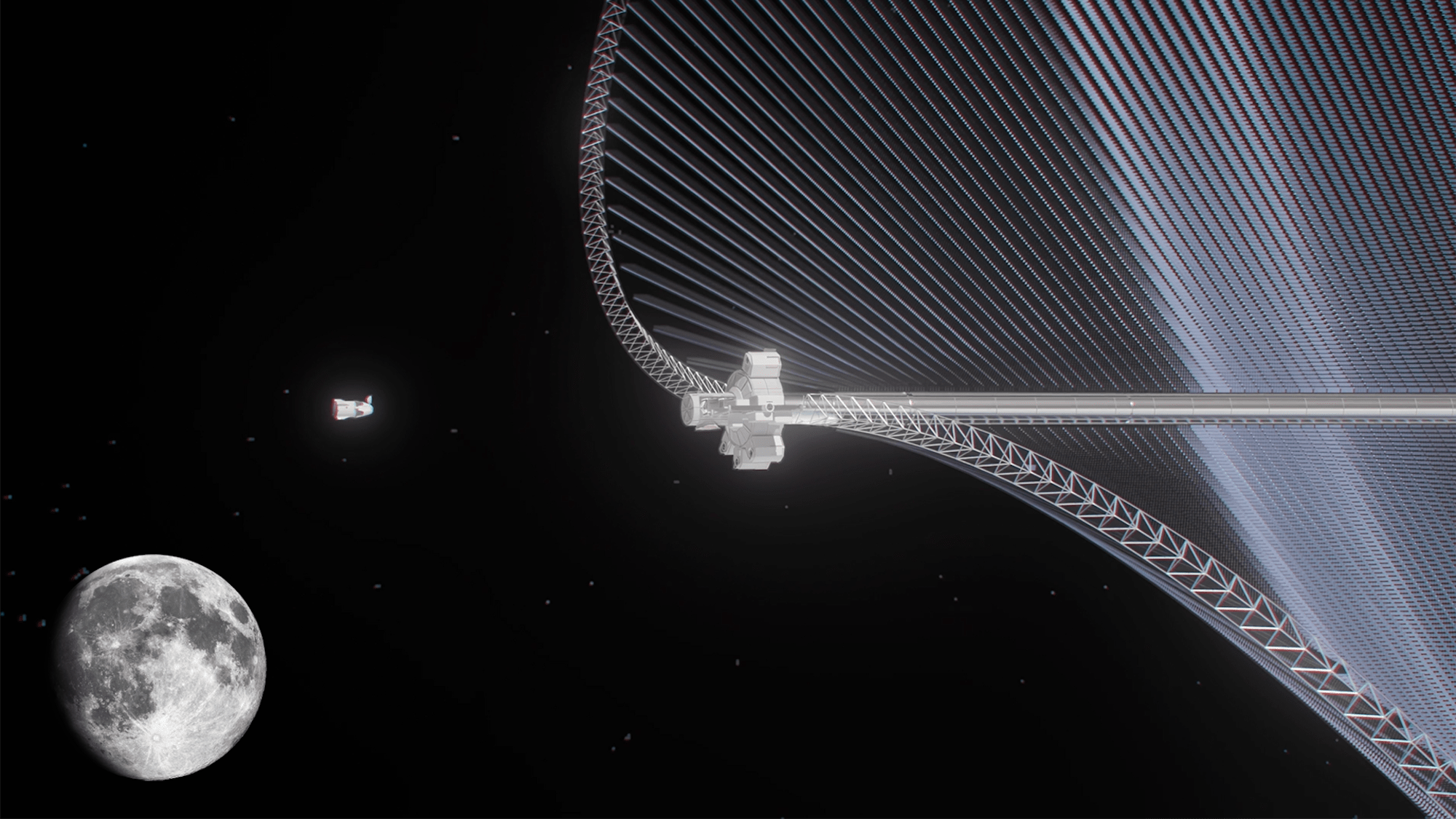

Harvesting solar power here on Earth is limited to a location’s daylight hours—a restriction that doesn’t exist while in space. Knowing this, researchers have long theorized and experimented on ways to construct solar farming satellites capable of beaming virtually unlimited clean energy back to Earth via microwave transmissions. But as progress inches closer to making the science fiction concept a reality, a new project taking shape aims to amass solar power beyond Earth’s surface—in this case, from the moon.
According to a recent European Space Agency (ESA) bulletin, engineers at the Swiss company Astrostrom unveiled the first details for their Greater Earth Lunar Power Station, or GE⊕-LPS, in a study published earlier this year. Taking a cue from butterfly wing physiology, the GE⊕-LPS includes V-shaped solar panels positioned in a helix configuration over one-square-kilometer in length. Such a size could hypothetically allow the satellite station to beam as much as 23 megawatts of sustained energy to a lunar base. For reference, a single megawatt of power can supply as many as 200 houses in Texas with energy during times of peak demand.
[Related: A potentially revolutionary solar harvester just left the planet.]
Per the team’s study, both the GE⊕-LPS and even its solar panels could largely be constructed using lunar surface materials such as iron-pyrite. Iron-pyrite, also known as “Fool’s Gold,” can be found on Earth, but its components also occur in lunar regolith. Combining these could allow for synthetic manufacturing. With each light-absorbing crystal measuring around just 400th of a millimeter in size, iron-pyrite could function as a reliable reflective external layer for the solar panels.
The station itself is designed for sustained human habitation, and would be located at an Earth-moon Lagrange point roughly 61,350 km above the moon. Lagrange points are locations between two celestial bodies in which their respective gravitational and centrifugal forces balance out, thus creating an equilibrium requiring minimal orbital correction.
[Related: Are solar panels headed for space?]
Although such a project may initially seem financially and logistically prohibitive, researchers believe constructing and launching such satellites from the lunar surface could actually be easier and more cost-effective than doing so from Earth. In fact, Astrostrom engineers estimate lunar solar power launches would require five times less velocity change to place them in geostationary orbit compared to satellite launches on Earth. What’s more, the study determined that the deployment of GE⊕-LPS “could be achieved without requiring any technological breakthroughs.”
“Launching large numbers of gigawatt-scale solar power satellites into orbit from the surface of the Earth would run into the problem of a lack of launch capacity as well as potentially significant atmospheric pollution,” Sanjay Vijendran, head of the ESA’s SOLARIS space-based solar power research project, said in a statement. “But once a concept like GE⊕-LPS has proven the component manufacturing processes and assembly concept of a solar power satellite in lunar orbit, it can then be scaled up to produce further solar power satellites from lunar resources to serve Earth.”
